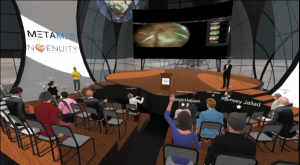The Submission Process
Sharing data and software with APTOS is similar to submitting an article to a journal. Briefly, the process for submitting your work for publication is as follows:
- If you are the submitting author, create a new project using the submission form.
- Add your project details. These will include contact information for co-authors, descriptive text, and data files.
- Once you are satisfied, submit the project to the editorial team for review.
- You will be notified of an editorial decision when the review process is complete.
- Once any issues have been addressed, your data or software will be published on APTOS.
- When a project is published, its content is fixed and cannot be changed.
Before submitting your project for review, please make sure that you have:
- Added all co-authors to the system. Co-authors will receive a notification message upon submission and must approve of the submission prior to publication.
- Read the Author Guidelines carefully.
- Selected an appropriate license for releasing your data files.
In addition, please check to ensure:
- Your project content and files are clearly described.
- Details of the data collection process are provided in the Method section. Supporting information and diagrams should be provided for less well-known data capturing devices.
- Relevant publications are cited in the main text. While we encourage you to give a link to the project website, the documentation on APTOS must be self-contained and sufficient for others to understand and use your resource.
- If this is an updated version of a previously published resource, please clearly specify what the major changes are from the previous version.
The Editorial Process
Once your project is submitted, it will be reviewed by one or more content specialists. Based on this review, you will be provided with an initial editorial decision within four weeks from submission. The possible decisions are:
- Accept: The editor is mostly satisfied with the content. The submission continues into the copyedit stage.
- Revise: The content is suitable for publication, but changes are required to make it more clear or reusable. Changes may include adding required information, restructuring files, and rewording content. Once the submitting author has made these changes, they may resubmit the project for review.
- Reject: The content is not suitable for publication.
Submission Guidelines
- Choose a proper resource type. The submission can be:
- A database of research data with significant potential for reuse by the research community. This may include data that enables published studies to be reproduced, data for benchmarking algorithms, and data that supports novel investigations.
- Software that has been developed for research applications.
- A challenge for the research community. Files such as datasets and software may be included as part of the challenge.
- An implementation of a statistical or machine learning model with potential for reuse by the research community. Typically models will be created by a training process and may have dependencies on specific computational frameworks.
- To help the community to reuse your shared resources, we require a detailed description. The information that you provide should focus on the resource and how it might be reused. During the submission process you are asked to provide information such as a title, an abstract for distribution to search indexes, context describing the manner in which the resource was created, etc.
- APTOS publishes content such as data and software for reuse by the research community. We typically do not review and publish content that reports on scientific findings. Scientific findings should be published elsewhere (for example, in a journal or conference). Our goals are to ensure that the content is safe to share and that it is sufficiently well structured and described for it to be a valuable resource for the research community. When submitting a resource, you will be asked to upload relevant data and software files. Please review the following guidelines when preparing your files for submission:
- README file: A README file should be included alongside the files. At minimum, the readme should include a title and a brief description of the package content.
- Protected Health Information (PHI): All protected health information must be removed. All dates (except year), including data collection dates, must be date-shifted or removed. The comprehensive guide for de-identifying data can be seen here.
- File naming: All files should be clearly named and must not include spaces (use underscores instead for increased readability) or special characters (e.g. “/”,”\,”.”).
- File types: All files must be in open-source format and machine readable. Files in proprietary format, such as MatLab, Excel spreadsheet or Microsoft Word document, will not be supported, and must be converted to open-source format. For example, MatLab data, Excel spreadsheets, or Microsoft Word documents can be converted to CSV format.
- Small datasets: Comma-Separated Value (CSV) is a good format for small datasets. CSVs should be formatted according to the RFC 4180 specification.
- Tidy data: Information needed for reuse of the data must be provided. In most cases, tabulated datasets should be structured following the principles of “tidy data“. For example, each variable should be in a column and each observation (or case) in a row.
- When sharing data and software, it is important to be clear about how you intend the content to be reused. Currently, authors submitting content to APTOS are able to select the following licenses:




